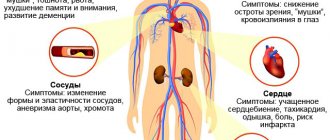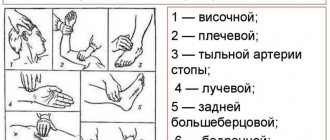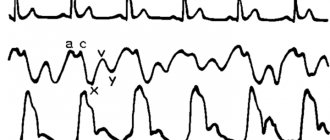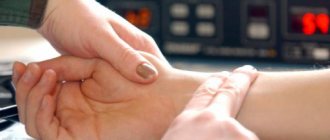The importance of heart rate during training
Monitoring heart rate during training is necessary to:
- determine the intensity of classes;
- effectively use oxygen to generate energy during aerobic exercise;
- choose a load to develop endurance;
- prevent stress on the cardiovascular system.
Those who have problems with the heart and blood vessels should be especially careful during exercise. For such patients, the load is selected based on an ECG machine with tests on a bicycle ergometer.
A sudden achievement of maximum heart rate is also contraindicated for those who have not previously exercised at all. Like other muscles in the human body, the heart needs time to reach a certain exercise regime. The duration of the preparatory period should be from three to six months.
With the correct load, heart rate should be measured several times:
- before classes;
- after warming up;
- at the end of the main part;
- when the load decreases;
- after classes during the cool down process.
IMPORTANT! Pulse is considered a more objective criterion of literacy in classes, in contrast to well-being.
When should you start monitoring your heart rate?
At the basic stage, when jogging is carried out over short distances at a slow and medium pace, it is better not to be interrupted by constant heart rate measurements, but to monitor the sensations. The appearance of heaviness in the lower extremities and shortness of breath indicates excessive stress on the body. To avoid complications, the pace should be reduced.
For athletes who have been practicing cardio training for a long time, it is advisable to measure their pulse as often as possible. This measure is important to prevent exceeding 90% of the threshold (of the possible maximum).
Pulse zone
Pulse is the rate at which the heart beats over one minute. There is also the concept of a pulse zone, which determines the range from the heart rate at rest to the maximum load on the body.
In everyday life, a person does not need to monitor his pulse zone. But for athletes this parameter is very important. The fact is that when the heart rate is in only one zone, it promotes weight loss; at high values, the endurance of the human body increases
Help: Each person has his own pulse zone, which is determined using laboratory tests.
Rules for measuring pulse
Measuring the pulse on the carotid artery: place your fingertips perpendicularly to the line connecting the head and neck (approximately halfway between the ear and chin). You should feel the rhythmic beating of the artery under your fingers.
Now, looking at the second hand of a watch or a stopwatch, we count the number of beats in 10 seconds and multiply by 6. We get the pulse rate in 1 minute. For example, in 10 seconds there are 13 beats, which means that the pulse in 1 minute is 78 beats.
We recommend taking your pulse in the morning while lying down (without getting out of bed). After moving to a sitting position, immediately repeat the measurement (in a sitting position, the pulse will increase).
| If the readings differ by more than 10 beats per minute, this may mean overwork during the previous training session or insufficient sleep. |
It is necessary to analyze the daily routine and the correspondence of the volume of training to your level of training and condition. It is possible to reduce the load (by reducing the intensity or number of workouts).
Heart rate
If you record your heart rate every morning, then over time (against the background of regular training for 4-6 or more weeks) you will notice that this value decreases slightly, that is, the heart beats fewer times per minute than before the start of training.
This is due to the fact that with regular physical activity you train the heart muscle, and the heart adjusts to a more economical mode of operation. This is a normal physiological phenomenon. For people who train for a long time (professional athletes), the heart rate per minute is 48-58 beats.
| The most effective activities for training the cardiorespiratory system are aerobics, interval training, running, and cycling. |
If you have not trained before, and the initial pulse during repeated self-monitoring is less than 55-60 beats per minute, even if you feel well (no complaints), we recommend consulting a doctor, as this may be a sign of a heart disorder (weakness of the sinus node , blockades of varying degrees and other conditions).
If a rapid pulse is constantly detected - more than 90 beats per minute - this may be a consequence of your uncomfortable emotional state (excitement, anxiety, etc.), and may also be a sign of various pathological conditions (a cold or the recovery period after it, anemia , diseases of the thyroid gland, etc.), requiring examination by a doctor, after which a decision will be made on the possibility and volume of the load.
Pulse rhythm
Normally, the pulse wave propagates at regular intervals. There is a minimal error - during self-control it is invisible.
If, when counting the pulse, there is a feeling that it is slowing down, or the beat “falls out” (often this is accompanied by a subjective feeling of “interruptions” in the heart’s work, “fading”, “reversal” of the heart), we recommend contacting a therapist or cardiologist. Based on the results of the examination, a decision will be made on the need for additional examination, the possibility and volume of training load.
Safe heart rate during exercise
Heart rate is an objective criterion for assessing training load during training. Using heart rate, you can regulate the intensity of your exercise.
During aerobic exercise, heart rate indicators are not informative and cannot be used to regulate strength loads in the gym.
During sports exercises
Physical activity makes the heart beat faster. As a result, the volume of pumped blood is often released into the system to supply the human muscles and organs with oxygen, so the number of shocks increases greatly.
If the body has not previously been exposed to heavy exercise, then a high heart rate during sports is considered normal. For professionals, even during training, the heart rate increases slightly, which is explained by constant cardio loads. The heart muscle gets used to it over time and copes with pumping blood without effort.
Heart rate during strength training
Strength loads are characterized by higher heart rate readings, unlike walking or running. After them, the pulse rises to ninety percent of the maximum, but this value is suitable for healthy people. When there is no preparation or a person has suffered from any illness, the heart rate cannot be increased above 85%. For example, if a person is forty-five years old, then the permissible limit is 85% of the maximum: 220 − 45 = 175, which is 149 beats per minute.
The main thing here is to wait for the pulse to recover before another approach. He should get back to ninety beats per minute. A person should not experience shortness of breath, increased heart rate or discomfort in the heart area. If the pulse has not decreased in seven minutes, then this indicates an incorrectly selected load, and it must be reduced.
Help: If you do strength exercises with a constantly high heart rate, this can disrupt the nutrition of the myocardium.
During cardio training
This category includes fitness training. In other words, your heart rate should be between 135 and 150 beats per minute. But first you need to undergo a special computer examination, which will help determine the upper and lower pulse threshold.
Help: The duration of cardio training should be from forty to fifty minutes.
Heart rate while walking
Walking is extremely beneficial for the human body. They improve well-being, lift your spirits and promote weight loss. The normal heart rate when walking is from 100 to 125 beats per minute. At rest, normal rates are from sixty to one hundred beats per minute.
Heart rate when running in women and men
Normally, the pulse of women and men is different, but besides this indicator, there are others that radically change the final value.
The normal heart rate for men can be determined using averaged data. There are several types of loads, and they all differ in maximum heart rate and training efficiency.
For a man with average physical shape:
- warm-up - from 95 to 115 beats per minute;
- walking - from 115 to 135;
- jogging - from 134 to 154.
Help: Anything higher than the presented indicators is considered excessive and has a negative effect on the human body.
Women's indicators are as follows:
- warm-up - from 97 to 117 beats/min;
- walking - from 117 to 136;
- jogging - from 136 to 155.
While cycling
With such loads, the heart rate becomes seventy percent higher than the maximum. This frequency is used to restore the body after high loads; it can be alternated with an active mode within 70–80 percent.
If classes are held within 75% of the maximum, then endurance increases and fat burning occurs. You can move into the zone with a heart rate of eighty or ninety percent of the maximum and above for no more than one minute.
Heart rate during interval training
These are aerobic exercises that differ from standard ones in that they involve alternating pace and level of stress on the body. This type of training is used by bodybuilders, as interval training helps burn fat without losing muscle mass and increases the volume of the heart, which helps bodybuilders cope with pumping a large volume of blood.
The heart rate during such training ranges from 90 to 100 percent of maximum. Of course, there are programs that assume smaller values. Here everyone chooses the program that suits them best.
What factors affect heart rate while running?
During running, many factors influence the speed of the heart, but 7 main ones are identified, which have the greatest impact:
- Age. The higher the age, the lower the limit that a person can overcome. If a sports young man of 20 years old with increased loads with a pulse of 195 feels normal, then for a 50 year old it will be critical.
- Human weight. The higher the person's weight, the faster the number of beats per minute increases. Usually, if the degree of completeness is significant, a critical number of beats per minute can be gained even when jogging for a long time. Accordingly, the lighter a person is, the more intensely he can work.
- Physical training. An athlete, during quiet movement, can have a pulse within 40 and feel great. This is due to the fact that his body is accustomed to stress and, in its absence, works at a calm pace. At the same time, for an ordinary untrained person, the pulse fluctuates between 60-70 beats.
- Floor. As it was revealed, the work of the heart of a woman and a man of the same training and age is different. Often a woman's pulse is several points higher.
- Bad habits. All bad habits negatively affect the heart, thereby causing it to beat faster, which results in an increase in heart function.
- Emotional condition. Stress and joy also affect the state of the body, and in the case of experiencing any emotion, it is difficult to predict an increase or decrease; the heart reacts differently in all people.
- Ambient temperature. Much also depends on weather conditions; in cold weather, the pulse will be lower than normal, and for example, being in a sauna will be comparable to a quick jog or sprint.
Maximum heart rate in older people
In older people, it is contraindicated to increase the maximum heart rate to ninety percent; seventy percent is enough. These recommendations are suitable for people who do not have heart problems.
But if a person has suffered a heart attack, has angina pectoris or arrhythmia, then it is necessary to select an individual pulse threshold. This can only be done using an ECG with stress. Its meaning is that the patient’s electrocardiogram is recorded at the time of exercise. The doctor uses it to find the maximum limit that the patient should not exceed.
If your heart rate is low during exercise
A low heart rate during exercise, as noted above, indicates a disruption in the functioning of the cardiovascular system. Doctors say that people who do not reach one hundred beats per minute in six minutes are at risk of developing a complex form of arrhythmia in the future, so they need to be examined.
A slow pulse is affected by blood pressure lowering medications for tachycardia, lack of thyroid hormones, and stomach ulcers. Professional athletes tend to have low heart rates due to overtraining.
You need to know your pulse during training in order to exercise effectively without harming your heart. For the calculation, the maximum value and zone of permissible increase in aerobic loads are used. The correct training plan is one that slows your resting heart rate.
How to determine your heart rate when running?
Each person has their own heart rate. It depends on many factors, from age to general physical fitness. The intensity of running has the greatest effect on the condition of the heart. If you run faster, your performance will increase. Each age has its own maximum, it is calculated using the formula 220 - age = maximum possible heart rate.
You can also measure the amount using a heart rate monitor during sleep or independently count the number of beats per minute while in a relaxed position. Professional athletes carry out special diagnostics in the laboratory.
Anything above this value is no longer good and can lead to irreversible consequences. In addition, even running at the limit for an unprepared person can lead to hospitalization.











